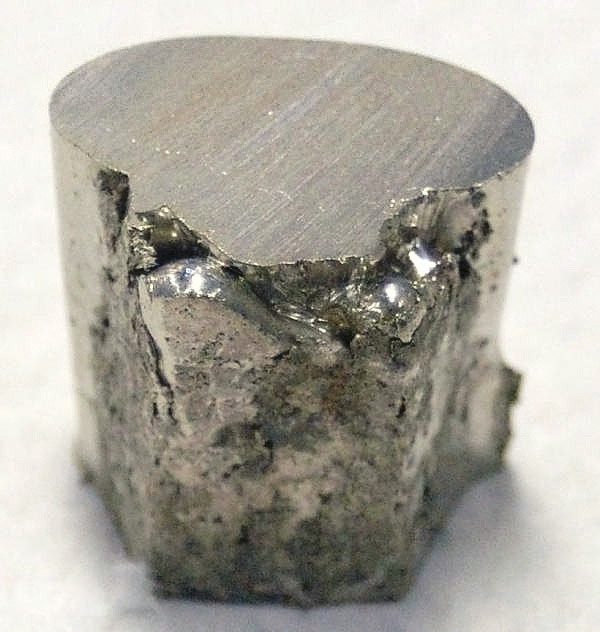nickel
Nickel Niccolum is a chemical element in the periodic table that has the symbol Ni and atomic number 28. It is a silvery white metal that has a high luster. It belongs to transit metals and is hard and malleable. It occurs in combination with sulfur in the mineral millerite, with arsenic in the mineral nickelite (nicolite), and with arsenic and sulfur in a mineral called nickel glance.
Because of its stability in air and inertness against oxidation, it is used in smaller coins, for plating iron, brass, etc., for chemical instruments, and in some alloys like nickel silver. It is magnetic and is very often found together with cobalt, both of which have been found in meteoric iron. It is most useful in alloys, especially high-alloy alloys.
Nickel is one of the five ferromagnetic elements. But, for example, "nickel" coins in the USA are not magnetic, because they usually contain 75% copper. Canadian copper coins minted in various periods from 1922–81 contained 99.9% nickel and were magnetic.
The most common oxidation state of nickel is +2, although 0, +1, +3 and +4 Ni complexes are observed. It is believed that the +6 oxidation state may also exist.
The nickel unit cell has a face-centered cubic crystallographic structure with a lattice parameter of 0.356 nm giving an atomic radius of 0.126 nm.
Nickel-62 is the most stable nuclide of all existing elements, even more stable than iron-56.

Production
Nickel production is quite complex and depends on the ore used. In the final phase, nickel oxide (NiO) is mostly obtained, which is further reduced with coke to form elemental nickel:
NiO + C → Ni + CO
However, the resulting metal is not pure, and therefore it is further purified by electrolysis. At the anode, polluted nickel is excreted, and at the cathode, already pure nickel.
Ni0 - 2e- → Ni2+ Ni2+ + 2e- → Ni0
Very pure nickel is produced in the so-called By the Mond process, in which the complex compound tetracarbonylnickel ([Ni(CO)4]) is formed as an intermediate. The purity of nickel produced in this way exceeds 99.9%
Most nickel is probably used for the production of alloys, the most important of which is Monel metal (68% Ni + 32% Cu + trace amounts of manganese and iron), which is extremely resistant to rusting and even to fluorine, and nichrome (60% Ni + 40% Cr), which is mainly used in electrical engineering. The physical and mechanical properties of nickel also predestined it for the production of special refractory alloys and intermetallic alloys (Ni3AL, NiAl). Pure nickel is mainly used in the food industry as a catalyst for solidifying fats, as well as in batteries and electroplating. Stainless steel contains about 8-12% nickel.
NiO - nickel oxide - green substance; used for coloring glass and ceramics
Ni(OH)2 - nickel hydroxide - green solid substance; together with other substances, it is used to prepare nickel salts
K2[NiF6] - potassium hexafluorochlorite - a red substance that is able to displace oxygen from water
[Ni(CO)4] - tetracarbonylnickel - an intermediate product in the production of nickel by the Mondo process
